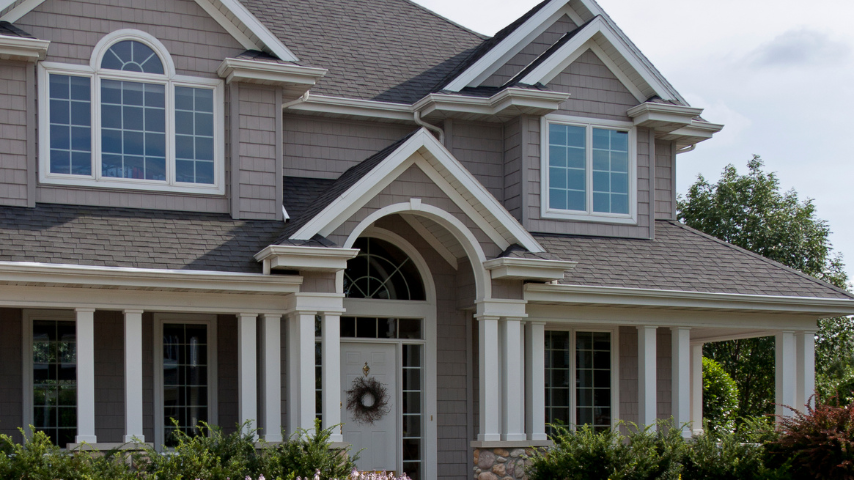For many homeowners, reviving kitchen cabinets presents an affordable and impactful alternative to extensive renovations, providing a fresh look without exorbitant expenses. Painting cabinets is a practical solution that breathes new life into tired surfaces, instantly elevating your kitchen’s visual appeal and even boosting your home’s overall value. However, to achieve a long-lasting, professional-quality finish, certain preparations, techniques, and color choices are essential. This guide will walk you through a comprehensive DIY journey, highlighting the clear benefits of tackling your cabinet painting project independently. Not only will you save money and enjoy the satisfaction of DIY accomplishment, but you’ll also have the freedom to customize your kitchen exactly as you envision. Covering everything from selecting appropriate materials and tools to applying advanced painting techniques, each section is designed to assist you in enhancing both the functionality and appeal of your home. Whether you’re an experienced home improver or a beginner looking for guidance, these practical instructions will empower you to refresh your kitchen cabinets successfully, bringing a vibrant transformation to the heart of your living space.
Choosing the Right Materials and Tools
Your choice of materials and tools significantly impacts the durability and aesthetic quality of your cabinet transformation. Selecting the ideal paint is the foundational step in this process—specialized cabinet paints or premium latex formulas are highly recommended, known for their resistance to everyday wear, cleaning routines, and frequent handling. Prioritize products labeled non-toxic or low-VOC; these options promote healthier indoor air quality, contributing positively to both your family’s wellness and environmental sustainability. Primer plays a crucial role, preparing surfaces and promoting paint adhesion. To achieve reliable and long-lasting results, invest in primer specially formulated for cabinetry and furniture applications. This choice drastically improves your paint’s adherence and final appearance, ensuring a smooth, uniform texture. When it comes to application, employing appropriate tools enhances the painting experience and final outcome. Angled brushes and foam rollers make it easier to evenly cover corners and achieve a streak-free finish, adding precision and consistency to your workmanship. Finally, assess your existing cabinet hardware. Take a moment to determine if your current knobs, handles, and hinges align with your desired aesthetic. Updating hardware is often a quick, budget-friendly way to add contemporary flair and amplify your kitchen’s overall style. Thoughtfully selecting your materials and tools guarantees a fulfilling and successful DIY experience, resulting in an attractive and functional kitchen upgrade.
Preparation and Cleaning
A successful cabinet facelift begins before the first brushstroke—effective preparation and meticulous cleaning set the stage for a flawless final product. Over time, kitchen cabinets gather grease, grime, and food residue, impeding paint adherence. Start your preparation by thoroughly cleaning cabinets with a reliable degreaser, or for an effective, eco-friendly option, use a mixture of vinegar and warm water. Allow surfaces ample drying time post-cleaning to avoid moisture-related paint problems. After cleaning, lightly sanding your cabinets with medium to fine-grit sandpaper creates just enough texture for effective bonding of the primer and paint. Once sanding is complete, remove residual dust carefully by wiping down the cabinets using a clean, damp cloth, creating a pristine painting surface. Don’t overlook the importance of organization during this process—clearly label or photograph cabinet doors and drawers before removal. This extra step significantly simplifies reinstallation and saves frustration later on. Additionally, protect your kitchen’s countertops, flooring, and appliances by laying down drop cloths and applying painter’s tape to edges and fixtures. These small yet vital preparations reaffirm your kitchen as a clean workspace, allowing greater attention to detail throughout your project. Comprehensive prep not only simplifies the painting process but ensures a high-quality finish you’ll proudly showcase as the centerpiece of your kitchen.
Painting Techniques for a Smooth Finish
Ensuring a smooth, professional appearance for your cabinets involves careful application and practiced technique. After priming, allow the surfaces to fully dry, fostering stronger paint adhesion and preventing peeling or flaking later. A high-quality brush or foam roller facilitates the smooth application of paint, minimizing visible brush strokes. Apply paint using deliberate, even strokes for consistent coverage. If you’re aiming for near-factory quality outcomes, consider spray painting, which provides consistent paint distribution. Though spraying requires more upfront preparation and protective measures, the end result is a pristine, uniform finish unmatched by other methods. Regardless of your chosen method, patience remains essential: multiple thin layers—typically two to three coats—yield superior results over one heavy, uneven coat, delivering brilliant color and prolonged durability without drips or imperfections. Properly ventilate your workspace throughout the painting process. Good airflow minimizes drying times, allowing each paint layer to set adequately, eliminating undesirable issues like bubbling or uneven coloring. By combining meticulous technique, patience, and thoughtful preparation, your cabinet surfaces will exhibit a polished, high-quality paint finish, revitalizing your kitchen and ensuring your painstaking efforts are rewarded with elegant, lasting results.
Color Selection and Trending Styles
The color choices you make for your cabinetry dramatically influence your kitchen’s overall look and ambiance. Contemporary design trends continue to champion neutral shades such as classic charcoal grays and soft whites, versatile colors accommodating various decorative themes. These timeless, sophisticated hues complement traditional and contemporary spaces alike, creating an inviting, adaptable backdrop. Alternatively, if you’re considering a bolder statement, rich, saturated colors such as navy blue or emerald green provide striking visual depth. More adventurous homeowners may appreciate the vibrant personality introduced by these intense shades. Two-tone cabinetry designs are also increasingly popular: pairing darker hues on the base cabinets with lighter shades for upper cabinetry effectively introduces contrast. This contemporary approach opens opportunities for creativity, transforms your kitchen’s visual dynamic, and gives the illusion of more expansive space. Accessorize your cabinets with hardware choices that complement your chosen colors—metallic or matte accents are currently in vogue, tying together your design choices elegantly and thoroughly. Before making a final commitment, test your favorite hues on a small hidden portion of the cabinet to observe how lighting and surroundings influence the color appearance. Thoughtful planning ensures your final color selection perfectly complements your kitchen environment and fulfills your aesthetic vision.
Sealing and Maintenance
A beautiful cabinet transformation relies as much on careful finishing and regular maintenance as on the initial painting. Protect your hard-earned revitalization with a durable finish such as polyurethane or polycrylic. Applying this protective coating strengthens the underlying color, resisting kitchen-specific wear such as scratches, moisture, heat, and stains effectively. Additionally, sealed cabinets are much simpler to maintain, requiring only routine dusting and cleaning to preserve their polished appearance. When cleaning cabinets, avoid harsh chemicals and abrasive scrubbers to prevent damage and dulling of the paint. Instead, regularly use a gentle, non-toxic cleaning solution paired with a soft cloth to maintain smooth surfaces and lasting vibrancy. Consider routine inspections of cabinet hardware as well; adjusting and tightening loose knobs, handles, or hinges ensures lasting function and aesthetic consistency. Diligent care and periodic touch-ups will retain the professional-looking appearance you worked hard to accomplish. Proper sealing coupled with simple, consistent upkeep preserves your refreshed cabinetry, ensuring your kitchen stays attractive and functional for years to come.
Transform Your Kitchen Cabinets for Lasting Appeal
Reviving your kitchen cabinets through strategic painting is a practical, cost-effective project that significantly enhances your home’s appeal. From carefully selecting superior materials and mastering detailed preparation to executing flawless painting techniques, every step contributes to the beautiful, lasting finish you’ll enjoy every day. Thoughtful color choices align with evolving trends, cultivating an inviting aesthetic that balances both modern flair and timeless design. Coupled with consistent sealing and upkeep, your refreshed cabinetry promises sustained beauty, functionality, and increased property value. Ultimately, painting your kitchen cabinets yourself is an empowering experience, providing tangible rewards and showcasing your style and skill within the heart of your home.









